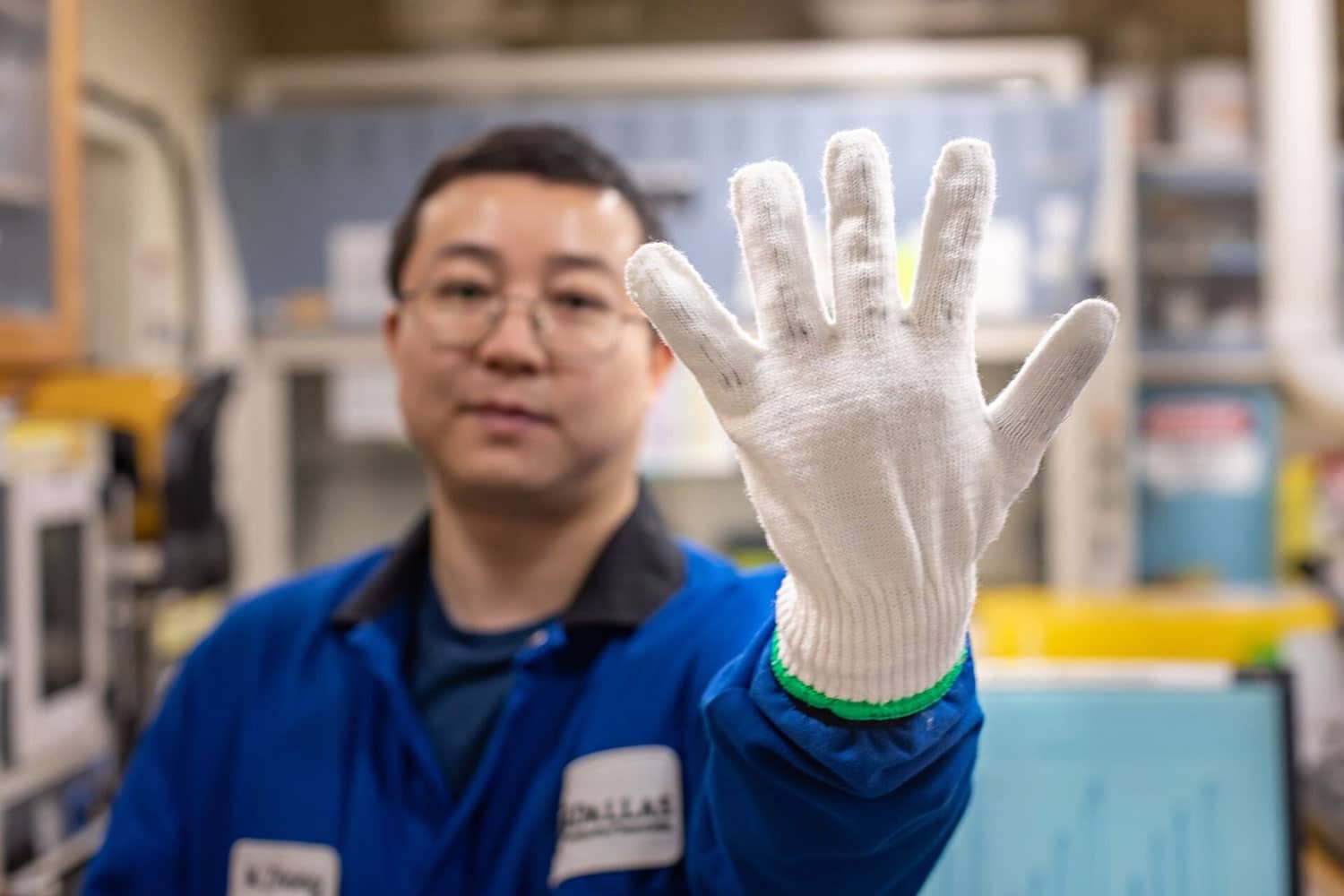
A team of University of Texas at Dallas researchers and their colleagues have made significant improvements to energy-harvesting yarns they invented called twistrons, which are made from carbon nanotubes and produce electricity when repeatedly stretched.
In a proof-of-principle experiment, the team sewed the new twistron yarns into a glove. As someone wearing the glove formed different letters and phrases in American Sign Language, the hand gestures generated electricity.
“Based on the output voltage profiles, we can easily differentiate the finger movement of different letters and phrases, and we can potentially use this glove as a self-powered sign language translator,” said Zhong Wang, PhD’21, lead author of the article.
The research group first reported their twistron technology in the journal Science in 2017. Since then, the team has refined the processes they use to make the yarns, and it has resulted in fibers that are more efficient and that produce more electricity per stretching cycle than the previous version.
The Twistrons are constructed from carbon nanotubes. These nanotubes are hollow cylinders of carbon 10,000 times smaller in diameter than human hair. They are twist-spun into high-strength, lightweight yarns. To make the yarns highly elastic, the researchers introduced so much twist that the yarns coil like an overtwisted rubber band.
“The basic mechanism of these twistrons is that when you stretch them, the bundles of individual carbon nanotubes come in contact with one another, increasing the density of electrons in the material, which increases the voltage output,” Wang said. “Based on this understanding, we found that optimizing the nanotube alignment – the amount of surface area where they interact – can dramatically increase the capacitance change and dramatically increase the voltage output.”
The team also incorporated graphene – one-atom-thick, 2D sheet of carbon – into the manufacturing process. Researchers first pulled a sheet of carbon nanotubes from a vertically aligned array of nanotubes called a forest. In new experiments, they added a step – they deposited graphene onto that sheet and then twisted and coiled it all together into yarns. This dramatically improved the capacitance change and the amount of electricity we can harvest from the resulting twistrons, Wang explained.
Stretching the new coiled twistron yarns 30 times a second (30 hertz) generated 3.19 kilowatts per kilogram of peak electrical power, a twelvefold increase over the highest values reported by other researchers for alternative mechanical energy harvesters for frequencies between 0.1 hertz and 600 hertz.
The maximum energy conversion efficiency obtained with the latest twistron version was 7.2 times that of previous twistrons, Baughman said. The researchers have applied for a patent on the technology.
Some of the potential applications of twistrons include harvesting energy from ocean waves to power sensors or eventually to help power cities, he said, as well as using body movements to power wearable devices.
Journal reference:
- Zhong Wang, Tae Jin Mun, Fernando M. Machado, Ji Hwan Moon, Shaoli Fang, et al, More Powerful Twistron Carbon Nanotube Yarn Mechanical Energy Harvesters. Advanced Materials (2022). DOI: 10.1002/adma.202201826
New energy harvester produces electricity when repeatedly stretched
Source: Tambay News

0 Comments